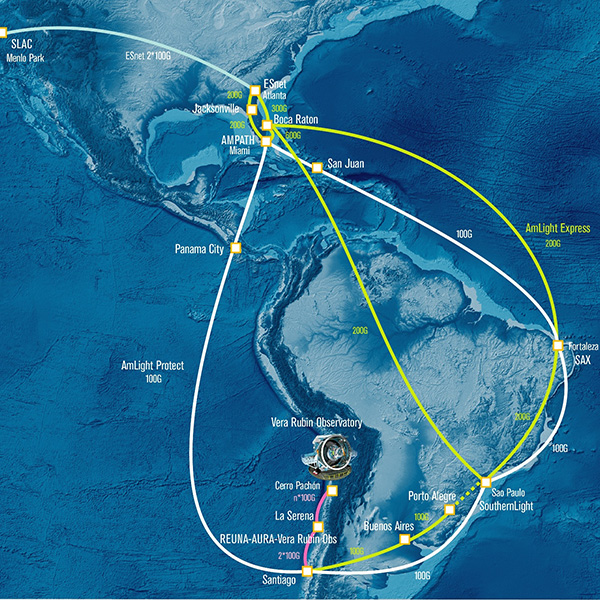
The camera inside the new telescope at the Vera C. Rubin Observatory in Chile rotates rapidly to map the entire sky visible from the Southern hemisphere, capturing more than 800 images nightly to create a detailed time-lapse survey of the heavens. Researcher Julio Ibarra oversees FIU’s fiber optic AmLight network, which supports high-speed transmission of the huge amounts of data generated by the observatory.
The network’s 100-gigabits-per-second data transfer rate moves data the entire length of the network in just seven seconds, with 20 terabytes of data making the trip each day. The data ride the 16,000-mile network through multiple cities and beneath the Atlantic Ocean to reach an interchange in Atlanta and then on to California, where a supercomputer processes the information and generates composite images that will be stacked and merged to create an ultra-high-definition time-lapse record — "the largest astronomical movie of all time."
View Related Expert Profiles: Go to Source